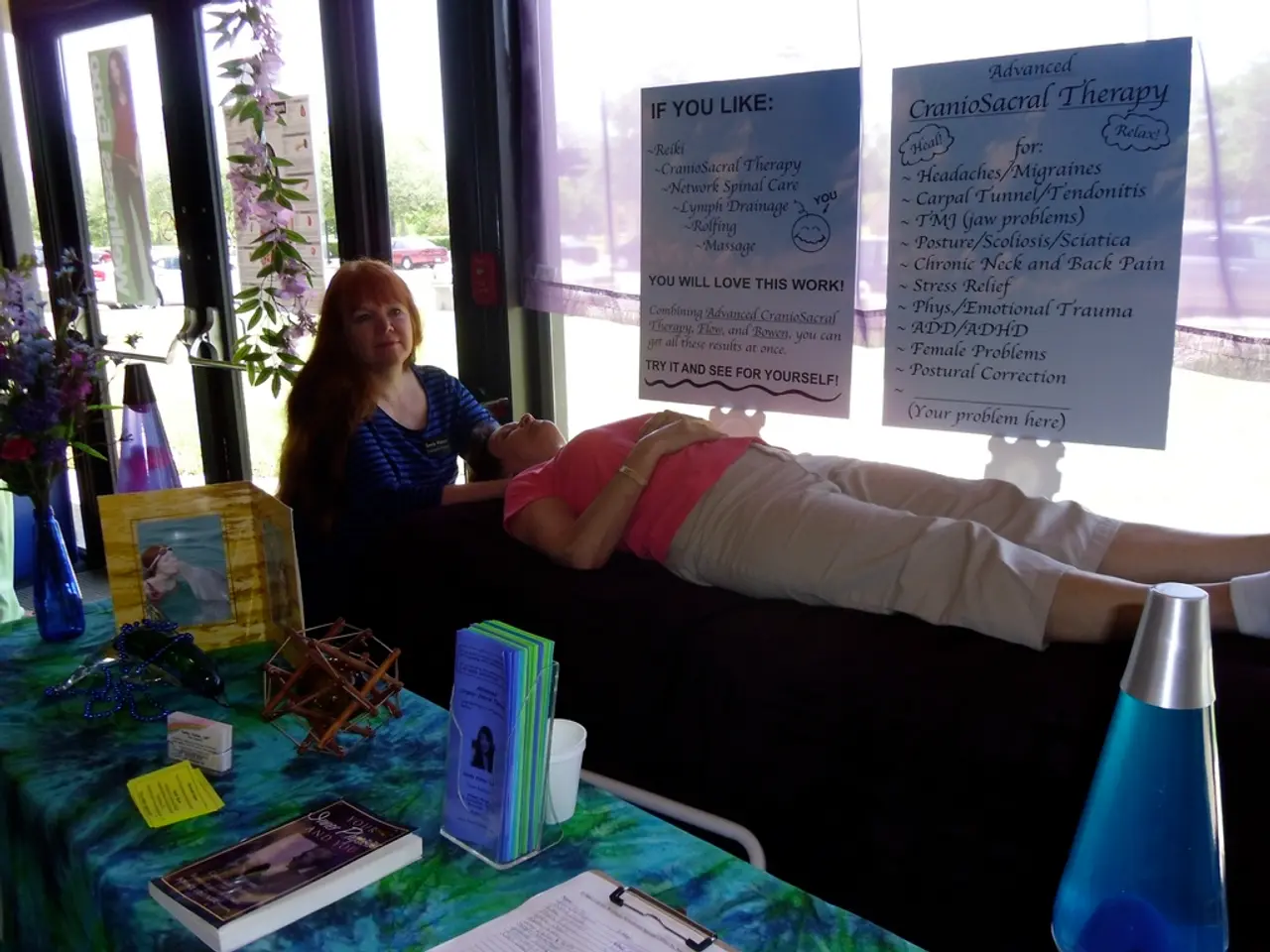Pregnancy skin irritations: Recognizing symptoms and their appearances
Pregnancy can bring about a myriad of changes in a woman's body, and one of the most common is the appearance of rashes. This article aims to provide an overview of various pregnancy-related rashes, their symptoms, causes, and treatments.
Firstly, it's essential to note that if a person encounters a rash during pregnancy and is unsure of its cause, seeking medical advice is crucial. The doctor can offer a diagnosis and recommend appropriate treatments, including home remedies and medical interventions.
Mild rashes can often be managed at home with simple measures such as keeping the skin clean and dry, moisturizing with unscented emollients, avoiding irritating products, wearing loose fabrics, and using cool compresses or calamine lotion to soothe itching. However, severe itching in pregnancy is not typical and should prompt immediate medical attention.
One common rash that can occur during pregnancy is PUPPP (Pruritic Urticarial Papules and Plaques of Pregnancy). This rash typically appears as itchy, raised red spots or bumps, starting on the abdomen and spreading to the thighs, usually in the third trimester (around 34 weeks). The cause is unclear, but it may be related to fetal cells invading the mother's skin or rapid stretching of the skin. Treatment usually involves corticosteroids prescribed by a doctor for symptom relief, and the rash typically resolves after birth with no long-term harm to the mother or baby.
Another common rash is Atopic Dermatitis, also known as eczema. This rash presents as dry, red, itchy patches that may crust, crack, or blister, commonly on the neck, face, and extremities. The cause is thought to be hormonal changes, family or personal history of allergies, asthma, or eczema. Treatment includes using gentle, unscented moisturizers, avoiding irritants, wearing soft cotton clothing, and cool compresses to relieve itching. Mild to moderate cases may be controlled with topical corticosteroids, while antihistamines may be used for severe itching under medical supervision. In extreme cases, phototherapy may be necessary, overseen by a dermatologist.
Papular Dermatitis of Pregnancy is another rash that can occur during pregnancy. This rash presents as itchy red, raised spots resembling insect bites and can appear anywhere on the body. The cause is hormonal fluctuations and abnormal blood levels during pregnancy. Treatment requires medical attention, as untreated cases may harm the baby. Specific treatments were not detailed but likely involve symptom management under doctor supervision.
In addition to these specific pregnancy-related rashes, common skin conditions like acne can also flare during pregnancy, but treatment options must be carefully selected to avoid harm to the fetus. Pregnant women should avoid using over-the-counter acne medications or strong prescription treatments without consulting healthcare providers due to potential risks to the fetus.
It's also important to be aware of more serious conditions such as Obstetric Cholestasis (ICP), a potentially serious liver condition that can occur during pregnancy, causing severe itching on the palms, soles, and spreading to other parts of the body. ICP is more common in South American and northern European continents and affects around 0.2-0.3% of pregnancies in the United States. Pemphigoid gestationis is a rare autoimmune disease that affects anywhere from 1 in every 2,000-50,000 pregnancies, causing an itchy, hives-like rash that begins around the navel and spreads to other parts of the body.
In conclusion, while many forms of pregnancy rash are harmless and may resolve after giving birth, in rare cases, rashes can be a sign of a more serious condition. Therefore, it's crucial to seek medical advice if you encounter any unusual rashes during pregnancy. Always consult a healthcare professional for diagnosis and appropriate treatment of pregnancy rashes.
- For pregnant women experiencing uncertainty about a rash's cause, seeking medical advice is imperative for a correct diagnosis and recommended treatments.
- Mild pregnancy rashes can be managed at home with practices like keeping clean and dry skin, using unscented emollients, avoiding irritants, wearing loose clothing, and using cool compresses or calamine lotion for itching relief.
- Severe itching in pregnancy should prompt immediate medical attention as it's atypical and may indicate underlying issues.
- PUPPP (Pruritic Urticarial Papules and Plaques of Pregnancy) is a common rash that presents as itchy, raised red spots or bumps, appearing in the third trimester and resolving after birth without long-term harm.
- Atopic Dermatitis, or eczema, during pregnancy can result in red, itchy, dry patches on the neck, face, and extremities, requiring gentle care and potential treatment with topical corticosteroids, antihistamines, or phototherapy.
- Papular Dermatitis of Pregnancy can cause itchy red, raised spots resembling insect bites, needing medical attention due to potential threats to the baby.
- Acne can flare during pregnancy, necessitating careful selection of treatments to avoid negative effects on the fetus. Consulting healthcare providers is essential before using over-the-counter or strong prescription treatments.
- Other serious pregnancy conditions, such as Obstetric Cholestasis (ICP) and Pemphigoid gestationis, can present with itchy rashes, necessitating medical intervention.
- Seeking medical advice and consulting healthcare professionals is the best course of action for correctly diagnosing and treating pregnancy rashes, ensuring the health and well-being of both mother and baby.




